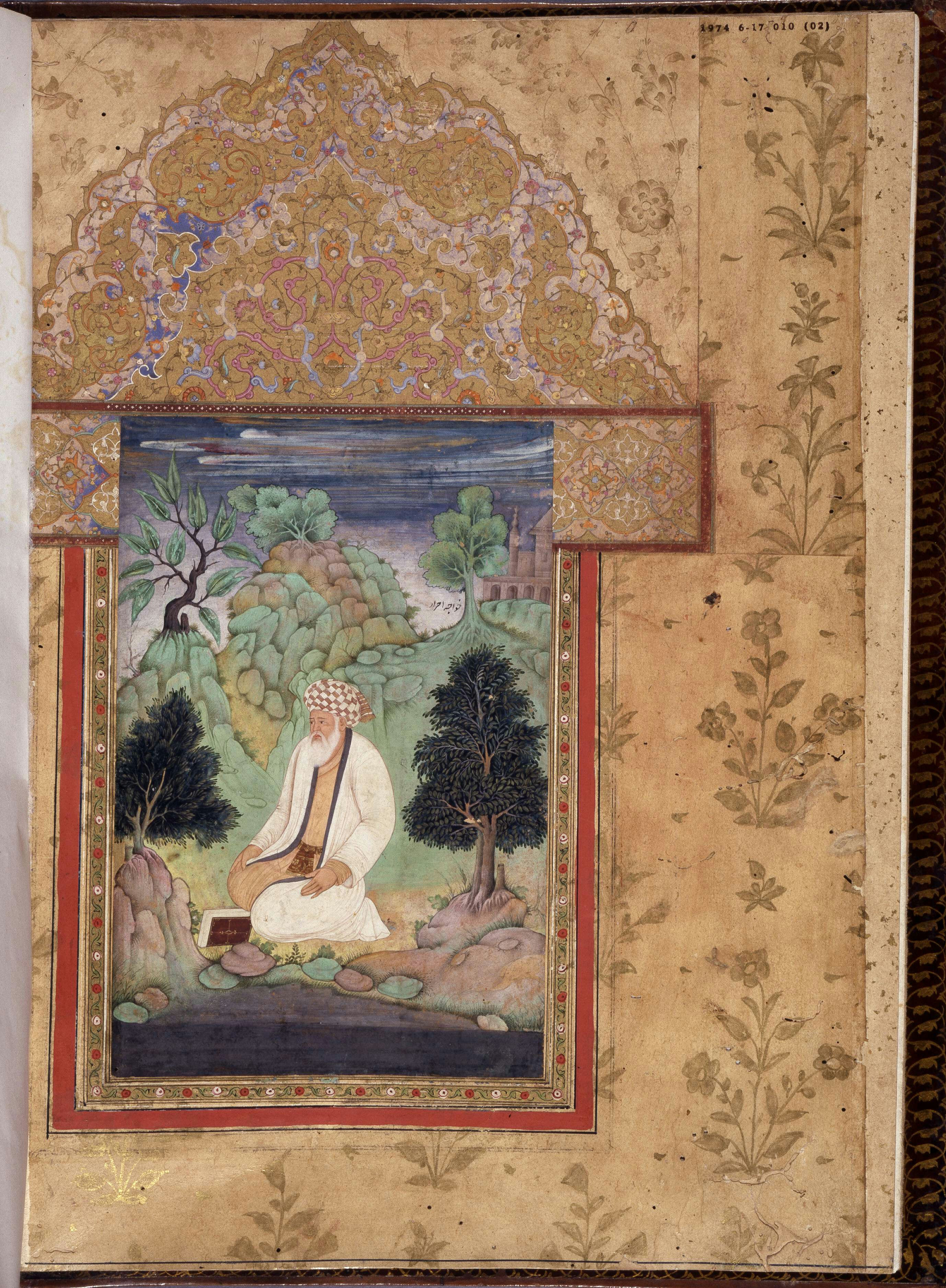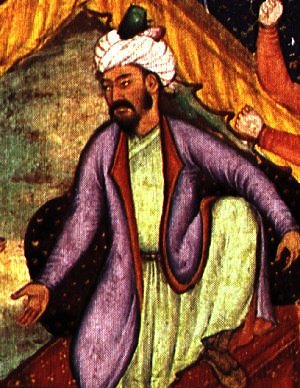|
Muhammad Sultan
Muhammad Sultan was 5th son of Abdurashid Khan and became Khan of Yarkent Khanate from 1592-1609 after the death of his elder brother Abdul Karim Khan (Yarkand), Abdul Karim Khan. He was the ruler who arranged Jesuit Bento de Gois, Bento de Goes' Caravan, sent by the third Mughal Empire, Mughal emperor Akbar in 1603, to the border of the Ming dynasty. Gois came to Yarkand in November 1603, was received by Muhammad Khan and spent in the country almost one and a half year, visiting Khotan, Aksu Prefecture, Aksu, Kucha, Karasahr, Chalish and Turpan. Gois mentioned that Muhammad Khan was governing the country through his direct relatives like ''Hen sitting on eggs in the nest '', he also indicated that Chalish (''Kingdom of Cialis'') had very strong fortress, here he had open dispute with local ruler about the God and religion. Some of his diaries were published in Cologne, Koln in 1618. In 1605 envoy from Abbas I of Persia came to Yarkand with offer to conclude an alliance against Sh ... [...More Info...] [...Related Items...] OR: [Wikipedia] [Google] [Baidu] |
Abdul Karim Khan (Yarkand)
Abdul Karim Khan was the ruler of Yarkand Khanate in what is now north-west China (Xinjiang) between 1560 and 1591. He was second son of Abdurashid Khan. During his reign, he lost control over a number of oases and merely acted as the titular figurehead ruler. Abdul Karim Khan was a descendant of the first Moghul Khan Tughlugh Timur (1347-1363). He came to power in 1560. He became the Khan as the eldest son in the family after the death of his father Abdurashid Khan. Abdul Karim Khan distributed between his brothers all the troops and gold that he inherited from his father and increased troop numbers following the failed attempt by the Barlas emirs to replace him with his brother Sufi Sultan, who ruled in Kashgar. He expelled the hakim of Yarkand, Mahmud Barlas, and the emir of Khotan, Ahmad Barlas, and dispersed their 3,000 troops. He sent his brother Abduraim Sultan to rule Chalish and Turpan, where the position of "Little Khan" (contrary to the "Great Khan" who ruled fro ... [...More Info...] [...Related Items...] OR: [Wikipedia] [Google] [Baidu] |
Moghul Empire
The Mughal Empire was an early-modern empire that controlled much of South Asia between the 16th and 19th centuries. Quote: "Although the first two Timurid emperors and many of their noblemen were recent migrants to the subcontinent, the dynasty and the empire itself became indisputably Indian. The interests and futures of all concerned were in India, not in ancestral homelands in the Middle East or Central Asia. Furthermore, the Mughal empire emerged from the Indian historical experience. It was the end product of a millennium of Muslim conquest, colonization, and state-building in the Indian subcontinent." For some two hundred years, the empire stretched from the outer fringes of the Indus river basin in the west, northern Afghanistan in the northwest, and Kashmir in the north, to the highlands of present-day Assam and Bangladesh in the east, and the uplands of the Deccan Plateau in South India. Quote: "The realm so defined and governed was a vast territory of some , rang ... [...More Info...] [...Related Items...] OR: [Wikipedia] [Google] [Baidu] |
Khoja (Turkestan)
Khoja or Khwaja ( kk, Қожа; ug, خوجا; fa, خواجه; tg, хӯҷа; uz, xo'ja; ), a Persian word literally meaning 'master' or ‘lord’, was used in Central Asia as a title of the descendants of the noted Central Asian Naqshbandi Sufi teacher, Ahmad Kasani (1461–1542) or others in the Naqshbandi intellectual lineage prior to Baha al-din Naqshband. The most powerful religious figure in the late Timurid era was the Naqshbandi Shaykh Khwaja Ahrar.The letters of Khwāja ʻUbayd Allāh Aḥrār and his associates. Translated by Jo-Ann Gross. Leiden: BRILL, 2002. The Khojas often were appointed as administrators by Mongol rulers in the Altishahr or present-day region of Tarim Basin in Xinjiang, China. The Khojas of Altishahr claimed to be Sayyids (descendants of Muhammad) and they are still regarded as such by the fraternity people of Altishahr. Although Ahmad Kasani himself, known as ''Makhdūm-i-Azam'' or "Great Master" to his followers, never visited Altishahr (today ... [...More Info...] [...Related Items...] OR: [Wikipedia] [Google] [Baidu] |
Nakshbandi
The Naqshbandi ( fa, نقشبندی)), Neqshebendi ( ku, نهقشهبهندی), and Nakşibendi (in Turkish) is a major Sunni order of Sufism. Its name is derived from Baha-ud-Din Naqshband Bukhari. Naqshbandi masters trace their lineage to the Islamic prophet Muhammad through Abu Bakr, the first Caliph of Sunni Islam and Ali, the fourth Caliph of Sunni Islam. It is because of this dual lineage through Ali and Abu Bakr through the 6th Imam Jafar al Sadiq that the order is also known as the "convergence of the two oceans" or "Sufi Order of Jafar al Sadiq". History The Naqshbandi order owes many insights to Yusuf Hamdani and Abdul Khaliq Gajadwani in the 12th century, the latter of whom is regarded as the organizer of the practices and is responsible for placing stress upon the purely silent ''invocation''. It was later associated with Baha-ud-Din Naqshband Bukhari in the 14th century, hence the name of the order. The name can be interpreted as "engraver (of t ... [...More Info...] [...Related Items...] OR: [Wikipedia] [Google] [Baidu] |
Jahangir
Nur-ud-Din Muhammad Salim (30 August 1569 – 28 October 1627), known by his imperial name Jahangir (; ), was the fourth Mughal Emperor, who ruled from 1605 until he died in 1627. He was named after the Indian Sufi saint, Salim Chishti. Early life Prince Salim was the third son born to Akbar and his favourite Queen Consort, Mariam-uz-Zamani in Fatehpur Sikri on 30 August 1569. He had two elder brothers, Hassan Mirza and Hussain Mirza, born as twins to his parents in 1564, both of whom died in infancy. Since these children had died in infancy, Akbar sought the blessing of holy men for an heir-apparent to his empire. When Akbar was informed of the news that his chief Hindu wife was expecting a child, an order was passed for the establishment of a royal palace in Sikri near the lodgings of Shaikh Salim Chisti, where the Empress could enjoy the repose being in the vicinity of the revered saint. Mariam was shifted to the palace established there and during her pregnancy, Akba ... [...More Info...] [...Related Items...] OR: [Wikipedia] [Google] [Baidu] |
India
India, officially the Republic of India (Hindi: ), is a country in South Asia. It is the seventh-largest country by area, the second-most populous country, and the most populous democracy in the world. Bounded by the Indian Ocean on the south, the Arabian Sea on the southwest, and the Bay of Bengal on the southeast, it shares land borders with Pakistan to the west; China, Nepal, and Bhutan to the north; and Bangladesh and Myanmar to the east. In the Indian Ocean, India is in the vicinity of Sri Lanka and the Maldives; its Andaman and Nicobar Islands share a maritime border with Thailand, Myanmar, and Indonesia. Modern humans arrived on the Indian subcontinent from Africa no later than 55,000 years ago., "Y-Chromosome and Mt-DNA data support the colonization of South Asia by modern humans originating in Africa. ... Coalescence dates for most non-European populations average to between 73–55 ka.", "Modern human beings—''Homo sapiens''—originated in Africa. Then, int ... [...More Info...] [...Related Items...] OR: [Wikipedia] [Google] [Baidu] |
Barlas
The Barlas ( mn, Barulās, script=Latn;Grupper, S. M. ‘A Barulas Family Narrative in the Yuan Shih: Some Neglected Prosopographical and Institutional Sources on Timurid Origins.’ Archivum Eurasiae Medii Aevi 8 (1992–94): 11–97 Chagatay/ fa, برلاس ''Barlās''; also ''Berlās'') were a Mongol and later TurkicizedB.F. Manz, ''The rise and rule of Tamerlan'', Cambridge University Press, Cambridge 1989, p. 28: ''"... We know definitely that the leading clan of the Barlas tribe traced its origin to Qarachar Barlas, head of one of Chaghadai's regiments ... These then were the most prominent members of the Ulus Chaghadai: the old Mongolian tribes — Barlas, Arlat, Soldus and Jalayir ..."''M.S. Asimov & C. E. Bosworth, ''History of Civilizations of Central Asia'', UNESCO Regional Office, 1998, , p. 320: ''"... One of his followers was ..Timur of the Barlas tribe. This Mongol tribe had settled ..in the valley of Kashka Darya, intermingling with the Turkish population, ... [...More Info...] [...Related Items...] OR: [Wikipedia] [Google] [Baidu] |
Koraish Sultan
Koreish Sultan was son of Abdurashid Khan Probably his father appointed him as governor of Khotan since 1533 where he was governing till 1570. After the death in 1570 of Shah Khan in one of skirmishes with Kalmaks, who was a ruler in Uyghurstan (Karasahr, Chalish , Turpan and Hami City, Kumul), Abdul Karim Khan (Yarkand), Abdul Karim Khan of Yarkand Khanate sent his brother Abduraim Sultan to rule Uyghurstan. The four brothers of Shah Khan expelled Abduraim Sultan and this action started struggle for power between them. One of brothers Abul Muhammad Sultan, or Muhei-me of Chinese sources, declared himself a ruler a sent Embassy to the Ming dynasty, but other 3 brothers didn't recognize him and one of them, Sufi Sultan, or So-fei of Chinese sources, sent another Embassy to the Ming dynasty. Abdul Karim Khan didn't want to see increasing of influence of the Ming dynasty in Uyghurstan and sent Koreish Sultan to subdue Shah Khan's brothers and restore Abduraim Sultan as a '' Little ... [...More Info...] [...Related Items...] OR: [Wikipedia] [Google] [Baidu] |
Uzbeks
The Uzbeks ( uz, , , , ) are a Turkic ethnic group native to the wider Central Asian region, being among the largest Turkic ethnic group in the area. They comprise the majority population of Uzbekistan, next to Kazakh and Karakalpak minorities, and are also found as a minority group in: Afghanistan, Pakistan Tajikistan, Kyrgyzstan, Kazakhstan, Turkmenistan, Russia, and China. Uzbek diaspora communities also exist in Turkey, Saudi Arabia, United States, Ukraine, and other countries. Etymology The origin of the word ''Uzbek'' still remains disputed. One view holds that it is eponymously named after Oghuz Khagan, also known as ''Oghuz Beg'', became the word ''Uzbek''.A. H. Keane, A. Hingston Quiggin, A. C. Haddon, Man: Past and Present, p.312, Cambridge University Press, 2011, Google Books, quoted: "Who take their name from a mythical Uz-beg, Prince Uz (beg in Turki=a chief, or hereditary ruler)." Another theory states that the name means ''independent'', ''genuine man'', or ... [...More Info...] [...Related Items...] OR: [Wikipedia] [Google] [Baidu] |
Kyrgyz People
The Kyrgyz people (also spelled Kyrghyz, Kirgiz, and Kirghiz; ) are a Turkic ethnic group native to Central Asia. Kyrgyzstan is the nation state of the Kyrgyz people and significant diaspora can be found in China, Russia, and Uzbekistan. They speak the Kyrgyz language, the official language of Kyrgyzstan. The earliest Kyrgyz people were the descendants of several central Asian tribes, first emerging in western Mongolia around 201 BC. Modern Kyrgyz people are descended from the Yenisei Kyrgyz that lived in the Yenisey river valley in Siberia. The Kyrgyz people were constituents of the Tiele people, the Göktürks, and the Uyghur Khaganate before spreading throughout Central Asia and establishing their own Kyrgyz Khanate in the 15th century. Etymology There are several theories on the origin of ethnonym ''Kyrgyz''. It is often said to be derived from the Turkic word ''kyrk'' ("forty"), with -''iz'' being an old plural suffix, so ''Kyrgyz'' literally means "a collecti ... [...More Info...] [...Related Items...] OR: [Wikipedia] [Google] [Baidu] |
Chu River
The Chu (Shu or Chüy) ( kk, Шу, Shu, شۋ; ky, Чүй, Chüy, چۉي; dng, Чў, Chwu (from , ''Chǔ''); russian: Чу, Chu) is a river in Northern Kyrgyzstan and Southern Kazakhstan. Of its total length of ,Чу (река) the first 115 kilometres are in Kyrgyzstan, then for 221 kilometres the river is the border between Kyrgyzstan and Kazakhstan and the last 731 kilometres are in Kazakhstan. It is one of the longest s in Kyrgyzstan and in Kazakhstan. It has a drainage basin of . The |






.jpg)
.jpg)
